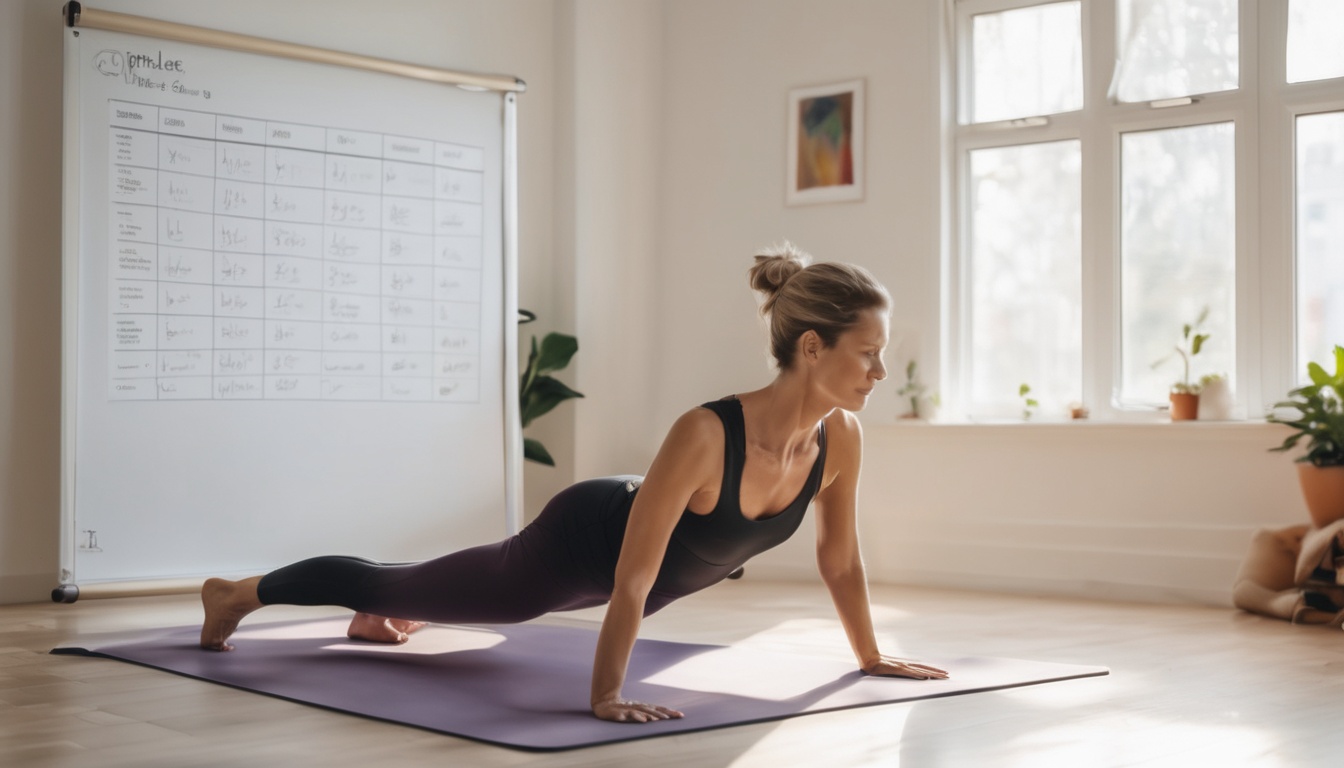
Pilates Pila – Strength, Balance, Wellness Explaining how to create a weekly pilates workout schedule that balances strength, mobility, core stability, and recovery helps beginners and experienced practitioners stay consistent and avoid injury.
A clear weekly pilates workout schedule turns random sessions into a progressive program. Instead of doing a few moves whenever you remember, each workout supports the next one.
With structure, you train key movement patterns regularly. You also give your body time to recover between intense sessions. Therefore, you can build strength, control, and mobility at the same time.
In addition, a good weekly pilates workout schedule prevents common mistakes. People often repeat the same beginner routine daily or, on the other hand, push too hard with advanced flows several days in a row. A plan keeps volume and intensity under control.
Before mapping specific days, you need clear principles to guide your weekly pilates workout schedule. These principles help you adapt the plan to your own fitness level and lifestyle.
Pilates can be gentle or very challenging. To progress safely, avoid stacking your hardest sessions back to back. Instead, alternate:
This simple alternation keeps your weekly pilates workout schedule sustainable, especially if you are also doing other exercise like running or strength training.
Your body adapts during rest. Therefore, schedule at least one day for full rest or light movement such as walking, gentle stretching, or restorative Pilates breathing. Even so, staying lightly active on that day can ease stiffness.
A perfect weekly pilates workout schedule that you never follow is useless. It is better to plan shorter, realistic sessions and complete them most weeks. After that, you can add duration or extra sessions if your energy allows.
Beginners need more recovery and simpler progressions. Advanced practitioners can handle more challenging work, but still need balance and control. Meanwhile, intermediate exercisers sit between these two.
Beginners benefit from frequent but shorter sessions. The goal is to build body awareness, core engagement, and proper breathing patterns.
This template forms a safe weekly pilates workout schedule for someone just starting. You can repeat it for four to six weeks while gradually extending a few sessions by five minutes.
Read More: Best beginner Pilates exercises to build core strength safely
If you already know the basics and can control your breathing, posture, and alignment, you can follow a slightly more demanding weekly pilates workout schedule like this.
This pattern keeps you active most days while still protecting joints and muscles from overload. As a result, your weekly pilates workout schedule supports long-term progress instead of quick burnout.
For advanced practitioners, Pilates often supports other training goals, such as running, lifting, or sports. You can design your weekly pilates workout schedule around these demands.
For example, perform shorter core-focused sessions on heavy training days and longer mobility flows on recovery days. Nevertheless, remember that more intensity requires more sleep, nutrition, and stress management.
No two people will have the same weekly pilates workout schedule. Work shifts, family responsibilities, and other workouts all influence what is realistic.
Start by listing your non-negotiable commitments. Then place your Pilates sessions into open spaces, beginning with the two or three most important ones. After that, add optional shorter sessions if you have extra time.
You can also rotate sessions. If your week becomes busy, swap a long strength day for a shorter mobility session. This way, you maintain the habit without forcing a rigid structure.
To keep motivation high, track how your body responds to the weekly pilates workout schedule you designed. You can use a simple notebook or a digital app.
Record session length, focus area, and how you felt before and after. Over time, look for patterns. Do you always feel stiff on certain days? Do you notice better posture when you keep mobility sessions regular? Use this feedback to adjust your weekly pilates workout schedule every few weeks.
On the other hand, avoid changing things too often. Give a new structure at least three to four weeks before deciding whether it works for you.
Ultimately, a weekly pilates workout schedule should fit your life, not fight it. Choose a realistic number of sessions, respect recovery, and allow your plan to evolve as your fitness grows.
When your schedule supports strength, mobility, and enjoyment, you are far more likely to keep your weekly pilates workout schedule for months and years, not just a few intense weeks.